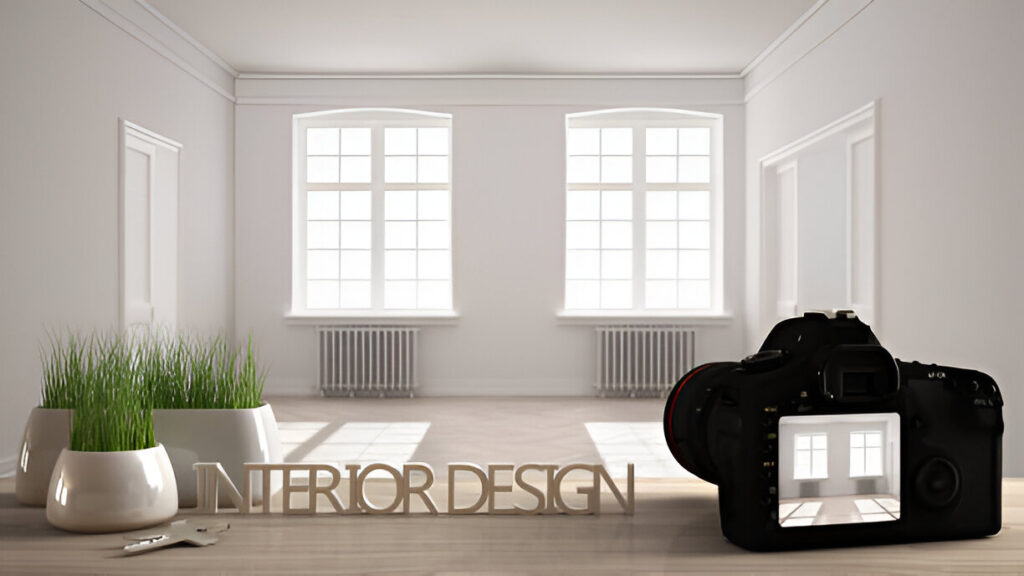A well-framed photograph can make your living room look like it belongs in a glossy magazine and your kitchen feel like the heart of a stylish home. The right shot does more than capture a space—it tells a story about light texture and personality that words alone can’t match.
You know your interiors deserve better than a quick snap on your phone. With clever angles thoughtful styling and a touch of creativity you can transform everyday rooms into visual masterpieces. If you want your interiors to stand out and truly reflect your taste it’s time to explore fresh ideas that will elevate your photography game.
Essential Equipment For Interior Design Photography
Camera selection for interior design photography plays a leading role and you will find that a full-frame DSLR gives you sharper details in shadowed corners or sunlight-lined alcoves. Mirrorless models might edge you into new depths too with their swift autofocus perks. Ever wondered why some interiors almost glow? Sensor size and low-light performance. Ask yourself how your camera handles dusk or moody lamps.
Lens choice. Opt for a wide angle and your rooms gain breathing space. Something like a 16-35mm lens draws out every stretch of hallway or curve in a staircase yet won’t cause drastic distortion if you keep it straight. You can switch to a 24-70mm when you seek tighter crops on intriguing textures like vintage upholstery. You might recall a time you noticed the worn grain of a wooden banister — use a macro if you will.
Tripods prove their worth in every frame. Long exposures will become possible and you can sharpen every edge from ceiling beam to skirting board. Adjustable legs help you level your camera in quirky period properties or ultramodern flats where the floors greet walls at playful angles. Have you ever tried balancing against a side table? A sturdy tripod frees both hands.
Remote shutter releases. You will experience less shake when you trigger the camera without touching it. In the case that natural light pushes your exposure up to half a second, blur might creep in without this gadget. You may prefer wireless, though cable releases never misfire.
Lighting gear pulls every detail to the surface. Portable LED panels work for shadowy corners or tableaus with dazzling daylight outside. You’ll notice a soft box gives upholstered chairs their silk-like sheen while window light calls for sheer reflectors or plain white cards to calm harsh contrast. You think of those moody bathrooms and beguiling kitchen nooks? Artificial fill tames shadows under sinks and within alcoves.
Memory cards and batteries. You will run out of power just as you find that perfect shaft of sun so pack extras. High-speed cards guard your RAW files and let you keep snapping when curiosity pulls you through every room. Let yourself reflect on what kit has made your interiors sing in the past. Which single tool might leapfrog your results this season?
Creative Interior Design Photography Ideas
You’ll spot magic in angles you never thought to try. Spaces come alive with a tweak in focus a dash of curiosity and a pinch of rule breaking. Have you ever wondered what your interiors reveal when you really start to play? Let’s go further.
Playing With Reflections And Mirrors
Reflections twist reality with a painter’s freedom. Use mirrors and slick surfaces to double your frame or skew the whole mood. If you place a glass vase on a sideboard or tilt a round mirror towards daylight you can find new stories in a single shot. When you walk through a room you might catch how furniture and colour bounce around you, revealing layers you can harness with a lens. What would happen if your camera lingered a second longer on those ghostly tricks? Experiment, because every slant will give your interiors an unexpected personality.
Incorporating Human Elements
You will notice rooms shift when a figure strolls through a shaft of sunlight. While a posed hand on a bookshelf or relaxed legs over a footstool can guide the viewer’s eye, your photos might conjure more warmth or narrative than a pristine uninhabited set. Have you ever thought about what energy you bring into a still frame when a friend sits reading beneath a lamp or someone sets a cup on a gleaming table? Human traces can give viewers clues about style and scale while encouraging them to picture their own lives in the scene. Ask yourself whose presence you want to hint at next.
Focusing On Textures And Details
Your lens feasts on textures when you edge in close. Velvet cushions aged leather cracked paint or the grain of wood—all become tactile for the eyes when captured right. You could fill your frame with the woven pattern of a rug or the ripples across glazed pottery. If you shift your depth of field you might catch a quiet story on a windowsill or in a row of patterned tiles. Do you ever pause to let your camera linger along the seams and surfaces? In the case that you notice those small details they anchor both mood and authenticity within your interior shots.
Editing Techniques To Enhance Interior Photos
You step into your editing suite, and colours start feeling like characters in a story. In some cases soft whites balance shadows across your kitchens, or blues breathe cold light onto tile and glass. Crooked lines might disorient, so vertical correction tools could become your best friends. You will notice how a slight tilt shifts perspectives, making ceilings soar or compressing space. Does your living room shoot call for uncluttered windows? Clone out distractions, lighten drapes, sweep away specks with the healing brush. It sometimes takes fifteen minutes to find that perfect balance between clean and clinical. If your camera missed the mood, white balance brings warmth to linen armchairs or cools Scandinavian oak. Will you catch the subtle difference between golden hour and clinical noon? You will, in the colour grading tab.
Lighting changes everything. In the right hands, the exposure slider is the sun’s twin, dialling back blown highlights or coaxing detail from darkened corners. Step into split toning, and you will paint layers of cool and warm, shaping depth that even a seasoned designer might envy. Shade softens chrome edges—sometimes, you might lift the blacks ever so slightly just to mimic that haze you remember from a spring morning. Can you feel the velvet shadows crawling along bookshelves? Sharpen up the grain and textures, bringing marble or linen back from digital flatness. A hint of structure, a whisper of clarity, and suddenly surfaces gleam.
Have you looked closely at lens distortions sneaking into your corners? Barrel and pincushion curves pull at your lines, but lens profile corrections in Lightroom or Capture One can return the space to its original symmetry. You will see the shift immediately—a wall corrected, a window no longer bending away as if from gravity. Vibrance and saturation usually need a gentle hand; interiors, after all, are subtle narrators. Push too far and carpets sing the wrong tune. Think about those apartments you scroll past online: which ones felt fresh, which ones felt fabricated? In the case that you still find something missing, you might dodge and burn selected areas, guiding the eye like a phantom through entryways or across a kitchen counter.
Play with cropping. Ratio changes can either tighten the drama around a statement lamp or frame a peaceful nook in golden rectangles. Reflect for a second: do your frames enhance visual flow, or do they choke it? Every edit leaves fingerprints on the space’s voice. Editing is your final sketch, the brushstroke to complete the image’s tale.
Wrapping Up
Interior design photography allows you to capture the true character of a space and communicate its story with clarity and style. By approaching each project with intention and creativity you’re not only documenting interiors but elevating them.
Let your images reflect both the artistry of the design and your own unique perspective. With the right techniques and attention to detail you can create photographs that inspire and leave a lasting impression on every viewer.



